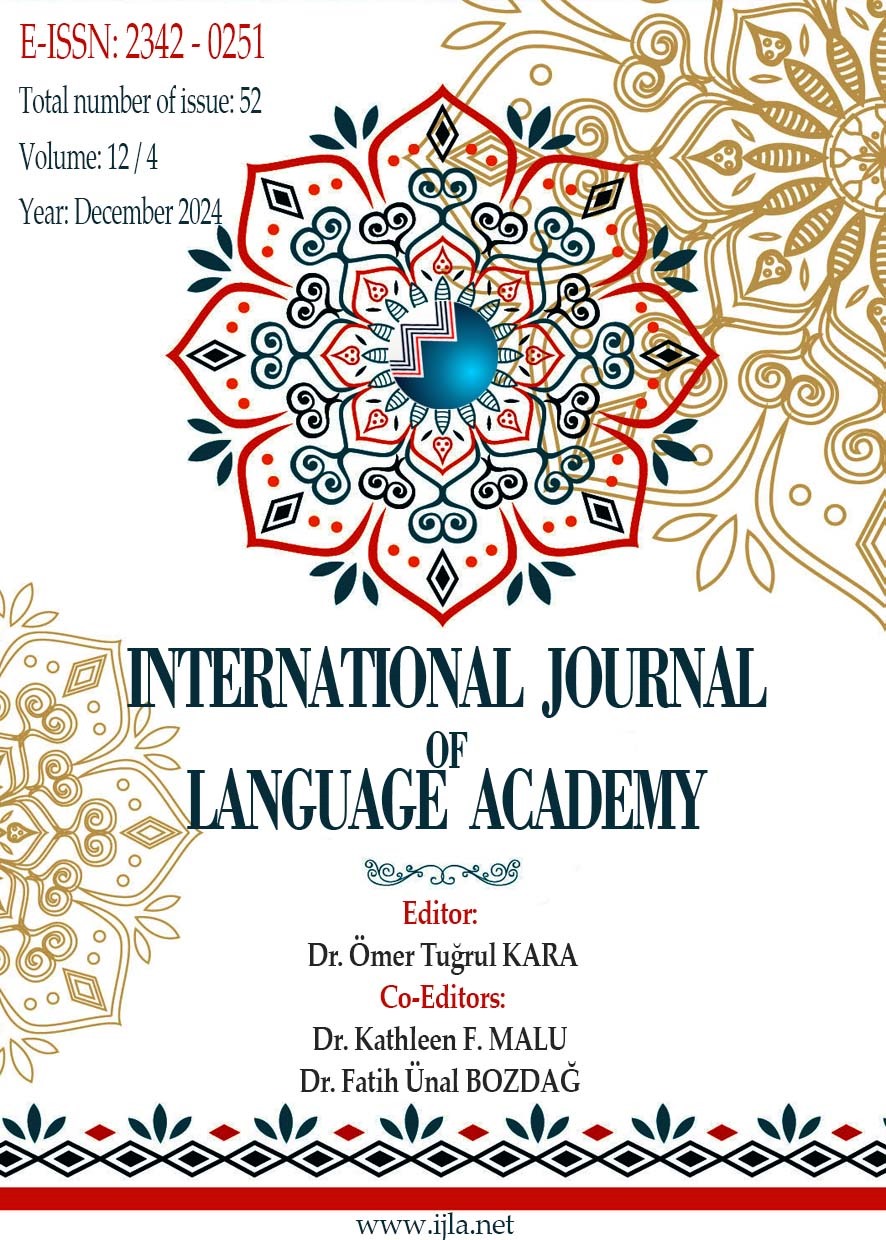Author :
Abstract
Yapay zekâ günümüzde hakkında çokça konuşulan ve tartışılan son elli yılın en büyük buluşlarından biri olarak gösterilmektedir. Bu buluş insan hayatına birçok konuda etki etmiş ve bu etkisini her geçen gün artırmaya devam etmektedir. Sağlık, ulaşım, eğlence, ekonomi ve eğitim gibi alanlarda bu buluştan yararlanılmakta veya yardımcı bir öge olarak kullanılmaktadır. Burada yapay zekâ ve eğitimin beraber ele alınması üzerinde durulacaktır. Yapay zekânın eğitim alanındaki kullanımı çok boyutlu bir hâl almıştır. Yapay zekâ bir yazar, bir öğretmen ve görev verildiğinde denetleyici gibi görev yapmakta ve birçok farklı alanda kullanılmaktadır. Bu araştırmanın amacı ise yapay zekânın yazarlık becerisini bağdaşıklık ve tutarlılık bağlamında incelemektir. Araştırmada belirlenen yazma konuları ile ilgili yapay zekâya metinler yazdırılmış ve bu metinler incelenmiştir. Yazma konuları belirlenirken alan yazında yazma konusunda yapılmış çalışmalar incelenmiş ve burada öğrencilere sunulan konulardan hareketle yazma etkinlikleri yapay zekâ aracına yazdırılmıştır. Araştırmada veri toplama aracı olarak doküman incelemesi kullanılmıştır. Yapay Zekâ tarafından oluşturulan metinler ise içerik analizi tekniği ile analiz edilmiştir. Elde edilen veriler bulgular bölümünde örneklendirilerek açıklanmıştır. Araştırma sonucunda yapay zekâ tarafından oluşturulan metinlerde en fazla bağlama ögelerine ve gönderim ögelerine rastlanmıştır. Ayrıca oluşturulan metinlerin de tutarlı bir yapıda oldukları tespit edilmiştir. Belirli konularda yapay zekâ aracının yazma konusunda başarılı olduğu sonucuna da ulaşılmıştır.
Keywords
Abstract
Artificial intelligence (AI) has been identified as one of the most significant inventions of the past five decades, a topic of considerable interest and debate in contemporary discourse. This invention has had a profound impact on human life in numerous domains, with this impact continuing to grow with each passing day. In a multitude of fields, including health, transportation, entertainment, the economy, and education, this invention is employed or utilized as an auxiliary element. The objective of this discussion is to examine the potential integration of artificial intelligence and education. The application of artificial intelligence in the field of education has become increasingly multifaceted. Artificial intelligence can be employed as a writer, a teacher, and a controller when tasked with a given objective, and is utilized in a multitude of domains. The objective of this study is to examine the writing abilities of artificial intelligence in the context of coherence and cohesion. In the study, texts were dictated to an artificial intelligence system regarding the predetermined writing topics, and these texts were subsequently analyzed. In order to determine the writing topics, the studies on writing in the literature were examined, and the writing activities based on the topics presented to the students were dictated to the artificial intelligence tool. Document analysis was employed as a data collection tool in the study. The texts created by the AI were subjected to content analysis. The data obtained are exemplified and explained in the findings section. The research findings revealed that contextual and referential elements were the most prevalent in the texts generated by artificial intelligence. Furthermore, it was established that the generated texts exhibited a coherent structural organization. It was concluded that the artificial intelligence tool was successful in writing in certain subjects.





